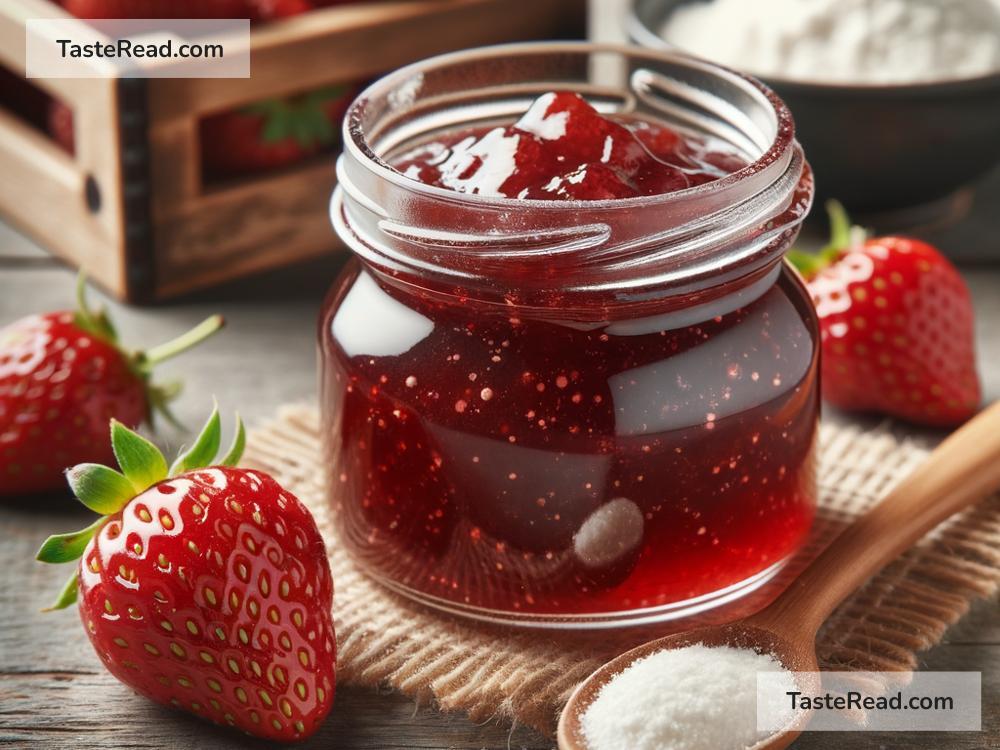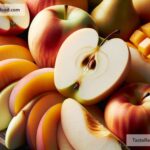The Role of Pectin in the Texture of Jams and Jellies
When it comes to making jams and jellies, one of the most important ingredients that often goes unnoticed is pectin. This natural substance is the secret behind their soft, spreadable texture. Without pectin, jams and jellies wouldn’t have the thickness we expect—they’d just be a runny, sticky mess! But what is pectin, and how does it work its magic? Let’s take a closer look at the role of pectin in the world of jams and jellies.
What is Pectin?
Pectin is a natural carbohydrate found in plants, especially in fruits. It’s part of the cell walls that help give fruits their structure and firmness. You might think of pectin as the “glue” that holds plant cells together. When fruits ripen, their pectin levels change, which is why their texture becomes softer as they mature.
Some fruits, like apples, citrus fruits, and quince, are naturally high in pectin. Others, like strawberries or cherries, have lower amounts. This difference matters when making jams and jellies, as the pectin level determines whether your mixture will thicken properly or stay too liquid.
Why Do Jams and Jellies Need Pectin?
The primary purpose of pectin in jams and jellies is to create that perfect, gel-like consistency. But how does this happen? It’s all thanks to a chemical reaction that occurs when pectin is combined with sugar and acid (like lemon juice) under heat. Here’s what happens:
-
Pectin molecules bond together – When pectin is heated along with sugar and acid, its structure changes. The molecules link up, creating a network that traps liquid and turns your fruit and sugar mixture into a firm, jelly-like consistency.
-
Sugar helps the process – Sugar isn’t just there to make your jam sweet. It plays a critical role in helping the pectin molecules bond by reducing the amount of water that dissolves the pectin.
-
Acid boosts the reaction – Acid, often added as lemon juice, helps activate pectin, ensuring it works properly to form a gel. Fruits with high acidity, like citrus fruits, usually need less added acid when making jam.
Without pectin, the fruit and sugar mixture wouldn’t hold together as a gel. Instead, it would remain runny or syrup-like. Pectin is the real hero that transforms liquid ingredients into the familiar spreadable texture we associate with jams and jellies.
Different Sources of Pectin
There are a few ways to add pectin to your jam or jelly recipe:
-
Natural Pectin in Fruits: As mentioned earlier, some fruits contain higher levels of pectin naturally. Apples, citrus peels, and blackberries, for example, have plenty of pectin. If you’re working with high-pectin fruits, you might not need to add extra pectin to your recipe.
-
Commercial Pectin: You can purchase pectin in powdered or liquid form at most grocery stores. This ensures your jam or jelly sets properly, especially when using low-pectin fruits like strawberries, peaches, or blueberries.
-
Homemade Pectin: Some home cooks prefer to make their own pectin by boiling fruit scraps, such as apple cores and peels, and straining the liquid. This is a great way to make use of leftovers and get the pectin you need for your recipe.
Tips for Using Pectin When Making Jams and Jellies
Getting your jam or jelly to set just right requires a careful balance of pectin, sugar, and acid. Here are some helpful tips:
-
Understand the fruit you’re using: If you’re working with low-pectin fruits, you may need to add commercial pectin or mix them with high-pectin fruits to achieve the right texture. For example, combining strawberries with apples or citrus can improve the consistency.
-
Follow the recipe closely: Jam and jelly recipes are often specific about the amount of pectin, sugar, and lemon juice needed. Stick to the instructions for the best results.
-
Don’t overcook: While it’s important to heat the mixture to activate the pectin, cooking it for too long can break down the pectin, resulting in a runny consistency. Keep an eye on the cooking time to avoid this.
-
Test for set: To check if your jam or jelly is ready, put a small amount on a chilled plate and let it cool for a minute. If it forms a gel-like texture and holds its shape, you’re done. If it’s runny, you may need to cook it a little longer.
Pectin-Free Alternatives
If you prefer not to use pectin, there are ways to make jams and jellies without it. You can simmer the fruit and sugar for longer periods to concentrate the mixture, allowing it to thicken naturally. However, this method may not deliver as firm a texture and requires more cooking time.
Another option is using chia seeds, which absorb liquid and create a jelly-like texture. While this approach works for quick, fresh-style jams, it won’t give you the classic consistency of traditional jam.
Conclusion
Pectin is the unsung hero of jams and jellies, giving them their characteristic texture and making them spreadable. Whether it comes from the fruit itself, a store-bought product, or a homemade source, pectin works alongside sugar and acid to transform a liquid mixture of ingredients into a firm, delicious treat. Knowing how pectin works and how to use it effectively will help you master the art of making jams and jellies at home. So, the next time you enjoy a slice of toast with jam, you can thank pectin for that perfectly thick and tasty experience!


